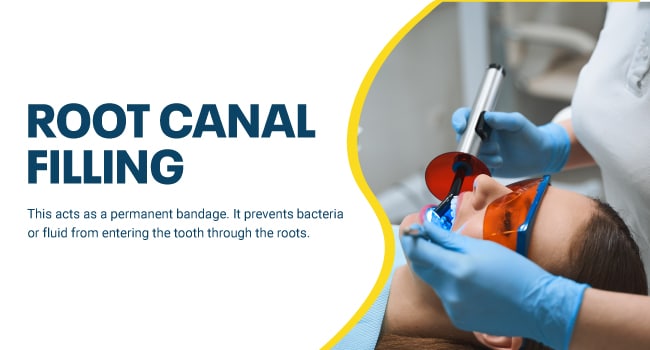Root Canals are a significant part of dental surgery in which the dentist ensures that the pulp is removed from the gum. In this process, the dentist cleans the damaged gums or may cause further infection. However, dubious questions are surrounding the failure of the root canal. Why does a root canal fail? Moreover, what should a patient do if their root canal fails? Where can one find a cheap root canal in Toronto?
Common symptoms of Root Canal Failure?
There are many reasons why one might find their root canal failing them. Some of them are mentioned below:
- Swelling
If there is swelling in your gums at the same place where you experienced your first root canal, then there are chances that your root canal has failed.
- Pain In gums
Experiencing the same pain when the root canal took place is another common indication of your canal failure.
- A pimple-like bump in the mouth
If you find yourself dealing with a pimple or a bump in your tooth, you might be having a failure or a rupture in your root canal.
- Changing Tooth mobility
After some time of the root canal if one finds mobility in the tooth. It is another indication that the root canal might still have pulp.
What are the common causes of Root Canal failure?
- A leaking
Root canal fails because of a leak in the gums or at the exact place where you've had your root canal.
- A Cracked or Fractured tooth
One of the indications of the root canal being ruptured is when the tooth is creaking up on its own. It is because the pulp has not been removed entirely.
- Dental Decay
The root canal may also be failed because of dental decay or consistent weakness in the gums.
- Incomplete Removal of Bacteria
If the dentist cannot comprehend the entire shape and size of the tooth, there are chances that the bacteria might be left untouched, causing a further issue in the root canal.
Can a Root Canal Fail after 10 years?
It can be possible for a damaged dental canal or root to lead to swelling amid 10 years of normal functioning without a sign of it. There is a chance that a filling appears perfect in every way that can cause issues later.
Most root canal fillings are done due to an infection within the root. Even in the best cases, you shouldn't expect the outcome to be 100% sterile as there are always a few bacteria within and around the root canal after the filling is completed. The body's natural defense mechanisms can help create an equilibrium in which the bacteria aren't causing issues or spreading into surrounding tissues. But this equilibrium may be altered later on for various reasons and can lead to discomfort and swelling in the region around your tooth. Even if the initial root canal fillings were not done on a tooth with an infection, there's a good chance of a plethora of bacteria in the canal after the filling is completed.
A certain amount of root canal fillings eventually fails. Sometimes, a new filling can fix the problem; however, occasionally, the removal of a different cause can be the answer, and in some cases, you may lose the tooth.
What happens if you have another root canal?
If your root canal has failed for some reason, then the next step is to have another root canal, and here is what will take place in your second root canal:
- Access the tooth
The dentist will first access your tooth by taking the crown or filling out the issues in the tooth.
- Removing old root canal
The dentist will then remove any previous material from root canal treatment. This is an important step to ensure everything new makes its way into the new root canal.
- Clean
The bacteria must be entirely removed if left at the same place. The dentist will re-apply antibacterial dressing
- Refill the Root Canal
The root canal must be capped or filled with new marital and new antibacterial products.
- Reseal
The treatment will conclude once the cap is resealed, and the dentist will finally place the tooth in order.






